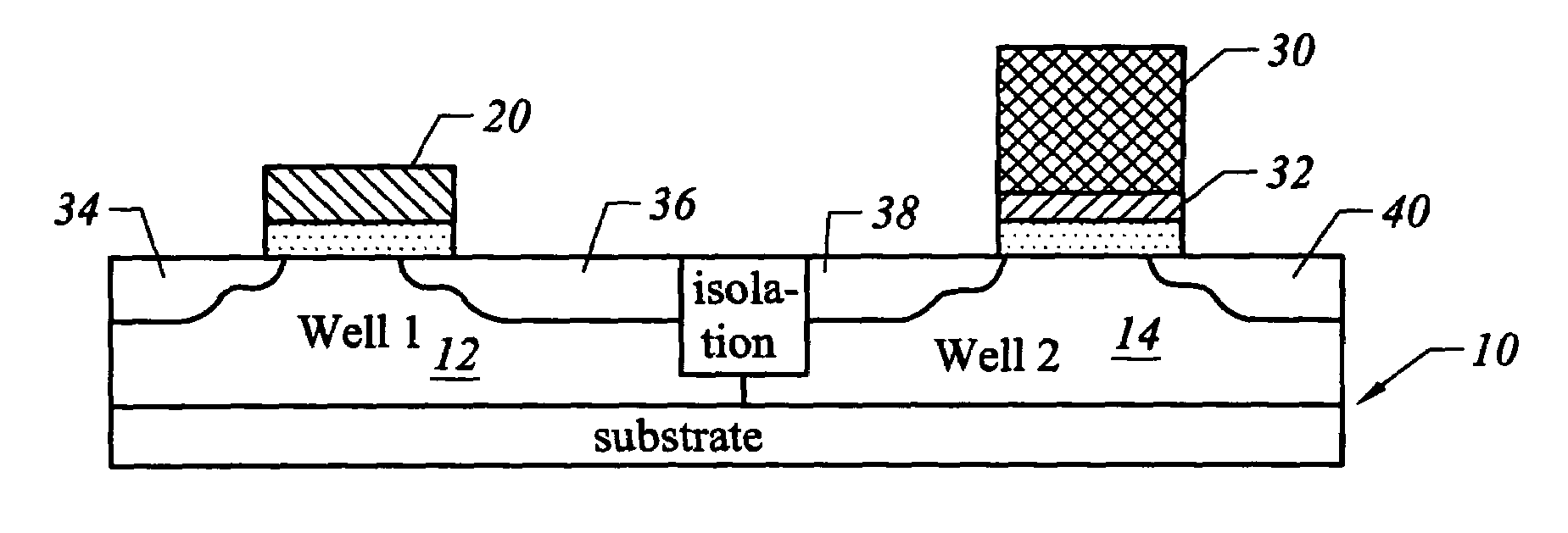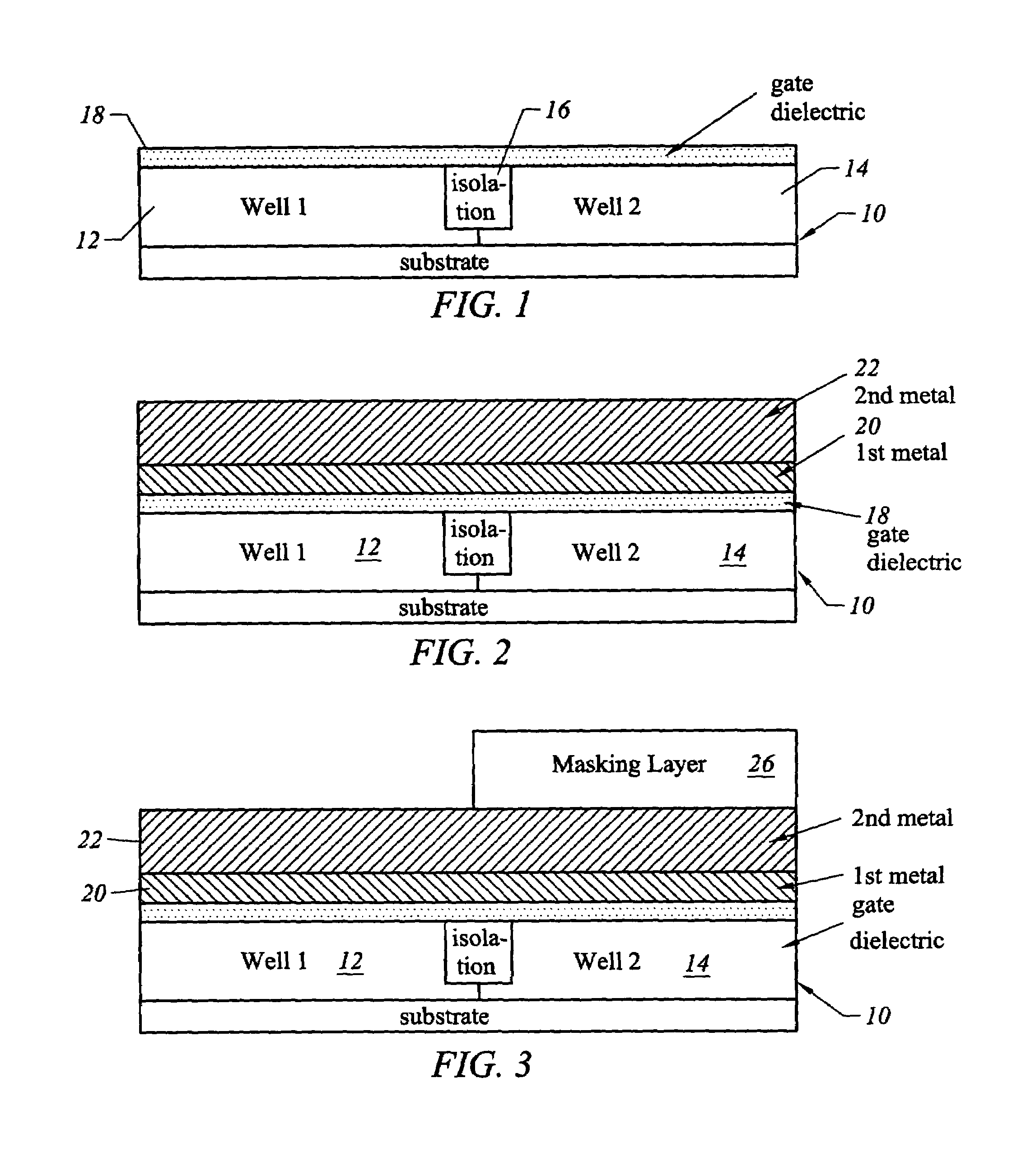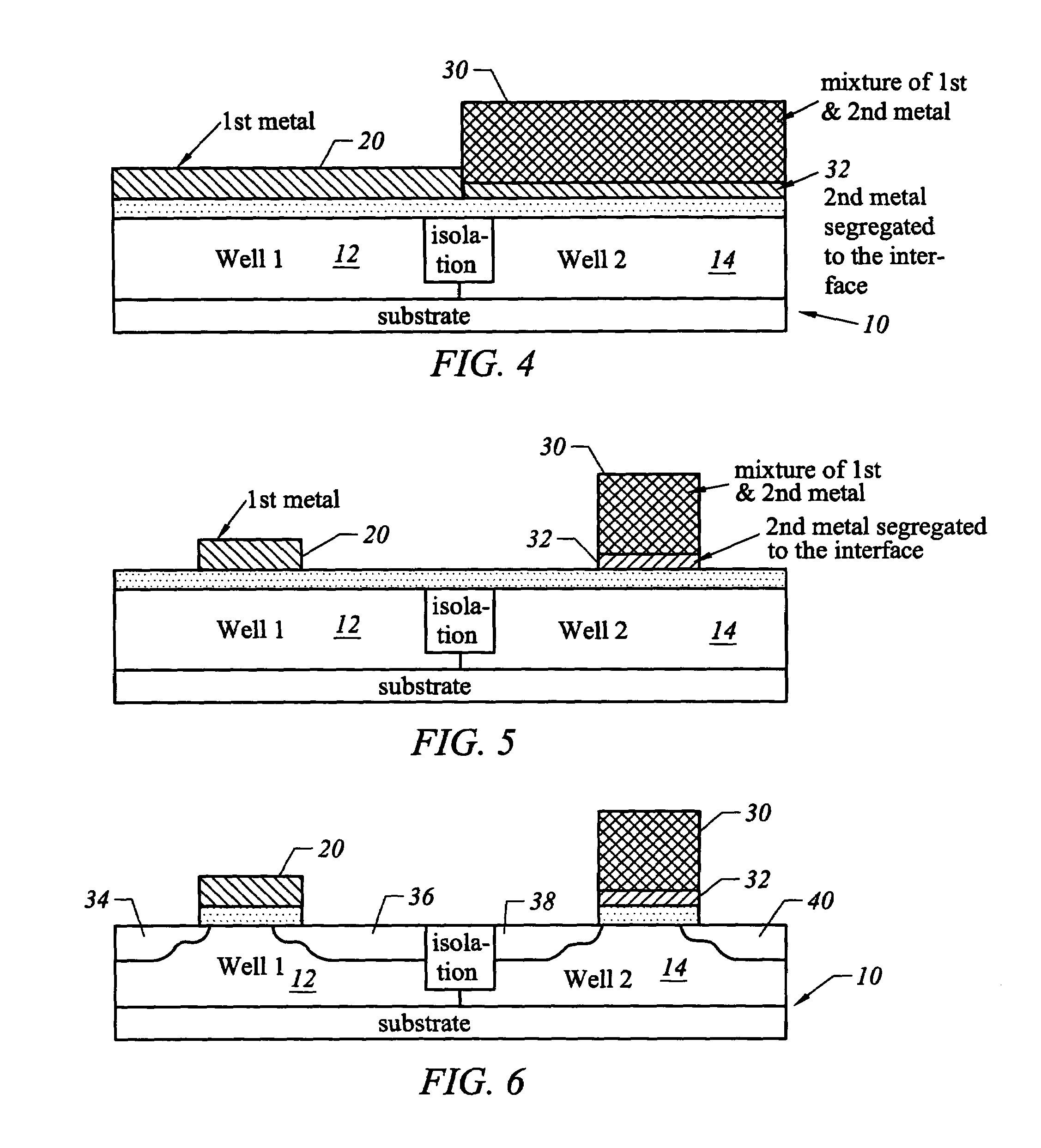Dual work function CMOS gate technology based on metal interdiffusion
a metal interdiffusion and dual work technology, applied in the field of cmos semiconductor transistors and circuits, can solve the problems of polycrystalline silicon not being the best choice for this application, overcoming limitations, unstable polycrystalline silicon, etc., and achieves the effect of effective altering the gate work function of the second metal gate, favorable threshold voltage, and high diffusivity
- Summary
- Abstract
- Description
- Claims
- Application Information
AI Technical Summary
Benefits of technology
Problems solved by technology
Method used
Image
Examples
Embodiment Construction
[0021]FIGS. 1–6 are section views illustrating the fabrication of a CMOS pair in accordance with one embodiment of the invention. In this embodiment, titanium, Ti, is employed as a first metal layer, and nickel, Ni, is employed as the second metal layer since Ni diffuses easily through Ti and segregates at the silicon oxide interface. Moreover, Ti has a work function similar to that of n-type silicon, whereas Ni has a work function similar to that of p-type silicon.
[0022]In FIG. 1 a silicon substrate 10 has a p-doped well 1 shown at 12 and an n-doped well 2 shown at 14 formed in a surface of the substrate with an isolation region 16 separating the two wells. A gate dielectric 18 of silicon oxide, for example, is formed on the surface of the two wells.
[0023]In FIG. 2 a first metal layer 20 of titanium is formed on silicon oxide layer 18, and a second metal layer 22 of nickel is formed over the titanium layer 20. The two metal layers are preferably formed by chemical vapor deposition ...
PUM
| Property | Measurement | Unit |
|---|---|---|
| work function | aaaaa | aaaaa |
| work function | aaaaa | aaaaa |
| thickness | aaaaa | aaaaa |
Abstract
Description
Claims
Application Information
 Login to View More
Login to View More - R&D
- Intellectual Property
- Life Sciences
- Materials
- Tech Scout
- Unparalleled Data Quality
- Higher Quality Content
- 60% Fewer Hallucinations
Browse by: Latest US Patents, China's latest patents, Technical Efficacy Thesaurus, Application Domain, Technology Topic, Popular Technical Reports.
© 2025 PatSnap. All rights reserved.Legal|Privacy policy|Modern Slavery Act Transparency Statement|Sitemap|About US| Contact US: help@patsnap.com



